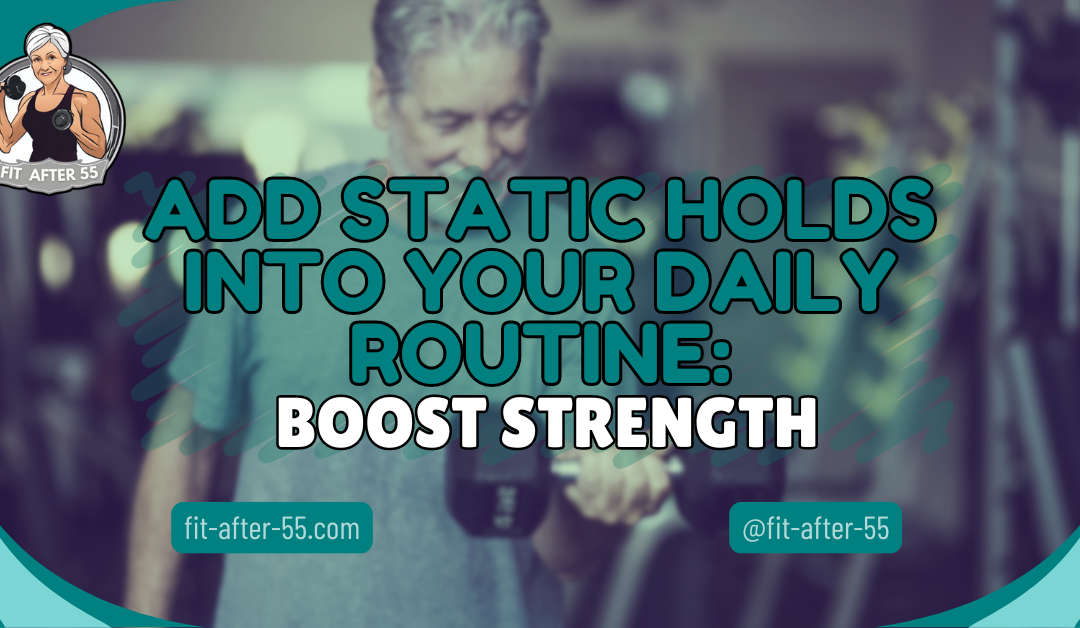Ready to add static holds into your daily routine and elevate your strength and flexibility to new heights? These seemingly simple yet incredibly effective exercises have the potential to transform your entire workout regimen. By focusing on holding a position for an extended period, you build endurance, enhance your joint flexibility, and boost your overall strength. Static holds challenge your muscles in ways that dynamic exercises may not, significantly improving stability and muscular control.
Whether you’re seeking to enhance your mobility, overcome a plateau, or incorporate a fresh challenge into your routine, static holds offer a unique and versatile approach. Imagine the difference it could make to your fitness journey—improved posture, increased resilience, and a stronger core. Dive into this article to explore how integrating static holds can revolutionize your routine and unlock new physical strength and flexibility levels.
Add Static Holds Into Your Daily Routine: Boost Strength and Stability
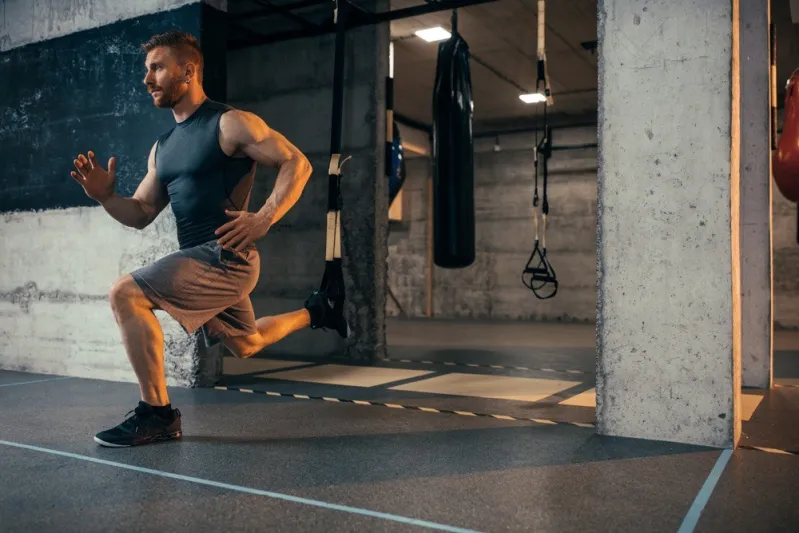
Static holds are a simple yet powerful way to boost strength and fitness. These exercises involve holding a position without moving, which can challenge your muscles in new ways. Adding static holds to your workouts can improve strength, stability, and muscle endurance.
Static holds are easy to fit into any routine, so you can easily add static holds into your daily routine. You can do them at home, the gym, or even work. They don’t need much space or equipment. This makes them great for busy people who want to stay fit.
You can start with basic holds like planks or wall sits. As you get stronger, you can try more advanced moves. Always listen to your body and stop if you feel pain. With practice, you’ll improve your overall fitness and daily activities.
Key Takeaways
- Static holds challenge your muscles by maintaining a position for an extended period, enhancing strength and muscular endurance.
- Exercises like planks and wall sits target your core, leading to better balance, posture and reduced back pain.
- Holding stretches helps lengthen muscles and connective tissues, improving flexibility and range of motion.
- Maintaining static positions improves body awareness, leading to more effective workouts and better form.
- Static holds can be easily incorporated into any routine, whether at home, work, or gym, making them suitable for busy schedules.
Benefits of Static Holds
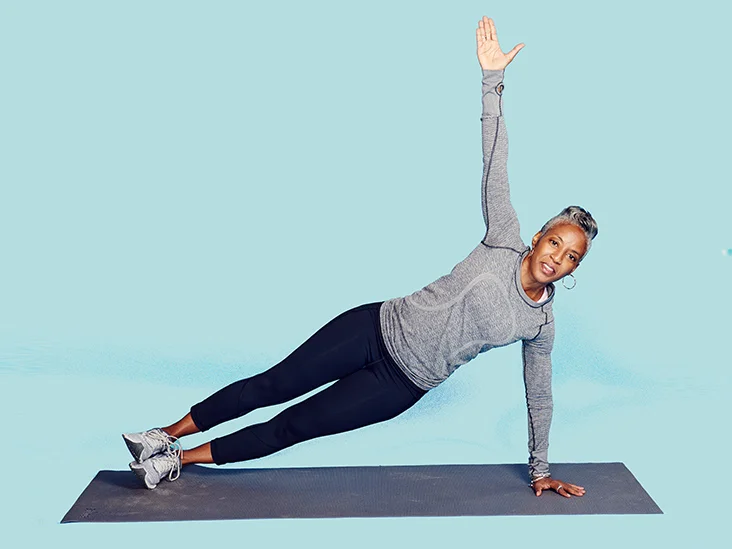
Static holds offer many advantages for your fitness routine. Adding static holds into your daily routine can boost your strength, improve your stability, and enhance your mind-body connection. Let’s explore these benefits in more detail.
Enhanced Muscular Endurance
Static holds can greatly increase your muscular endurance. When you hold a position for an extended time, your muscles work hard to maintain that pose. This builds stamina and strength. You’ll notice improvements in everyday activities.
Carrying groceries or holding a child becomes easier when you add static holds into your daily routine. Your muscles learn to work for longer without tiring. Static holds also help with weightlifting. They teach your body to handle heavy loads for longer periods. This can lead to better performance in the gym.
Improved Core Stability
Static holds are excellent for building core strength. Exercises like planks and hollow holds target your abs, lower back, and obliques. A strong core helps with balance and posture. You’ll stand taller and move more smoothly.
This can prevent back pain and injuries in daily life. Core stability also boosts athletic performance. Whether running, jumping, or lifting, a solid core provides a strong foundation. You’ll have better control over your body in various sports and activities.
Increased Flexibility and Range of Motion
Contrary to what you might think, static holds can improve flexibility. When you hold a stretch, your muscles and connective tissues slowly lengthen. This can lead to a better range of motion in your joints. You’ll move more freely and with less stiffness.
Improved flexibility can help prevent injuries during exercise or daily tasks. Static holds also complement dynamic stretching. They allow you to focus on problem areas and gradually increase your flexibility.
Mind-Muscle Connection
Static holds help you tune into your body. When you hold a position, you become more aware of which muscles work. This improves your mind-muscle connection. Better body awareness can lead to more effective workouts. You’ll target the right muscles and maintain proper form.
This reduces injury risk and increases exercise benefits. The focus required for static holds can also be meditative. It’s a chance to practice mindfulness and reduce stress. Static holds help you feel more centered and relaxed.
Did You Know?
Incorporating static holds into a fitness regimen offers several benefits. These exercises improve strength, stability, and muscle endurance while enhancing mind-muscle connection and body awareness. Additionally, static holds are time-saving and efficient, providing an effective workout in a short period—ideal for those with busy schedules.
Understanding Static Holds

Static holds are exercises where you maintain a fixed position without moving, making them a powerful way to add static holds into your daily routine. These challenging exercises can boost strength and endurance by keeping muscles under constant tension.
Defining Static Holds
Static holds involve holding a position without moving. Your muscles contract but don’t change length. This is called an isometric contraction. Examples include planks, wall sits, and chin-up holds. Static holds can last from a few seconds to several minutes.
The goal is to maintain proper form throughout the hold. This type of exercise differs from dynamic movements like push-ups or squats. Static holds can be done with or without weights. They work well for building strength and improving muscle endurance.
Types of Static Exercises
There are many types of static hold exercises. Here are some common ones:
- Plank holds
- Wall sits
- Chin-up holds
- Handstand holds
- Deadlift holds
- Kettlebell front rack holds
Each exercise targets different muscle groups. Planks work the core, while wall sits focus on the legs. Chin-up holds build arm and back strength. You can do static holds using just your body weight. Or you can add weights for extra challenge. The key is to maintain good form throughout the hold.
Physiological Effects
Static holds have several effects on your body. They increase muscle tension, leading to muscle breakdown. This breakdown is key for building stronger, bigger muscles. Static holds also improve muscular endurance. By holding a position for a long time, you train your muscles to work harder for longer periods.
These exercises can boost your mind-muscle connection. You become more aware of which muscles work when you hold a position. This can help improve your form in other exercises. Static holds may also help with balance and stability. Exercises like handstand holds challenge your body to maintain equilibrium in a fixed position.
Check out this video featuring a 20-minute static hold workout.
By: growingannanas
Incorporation Strategies
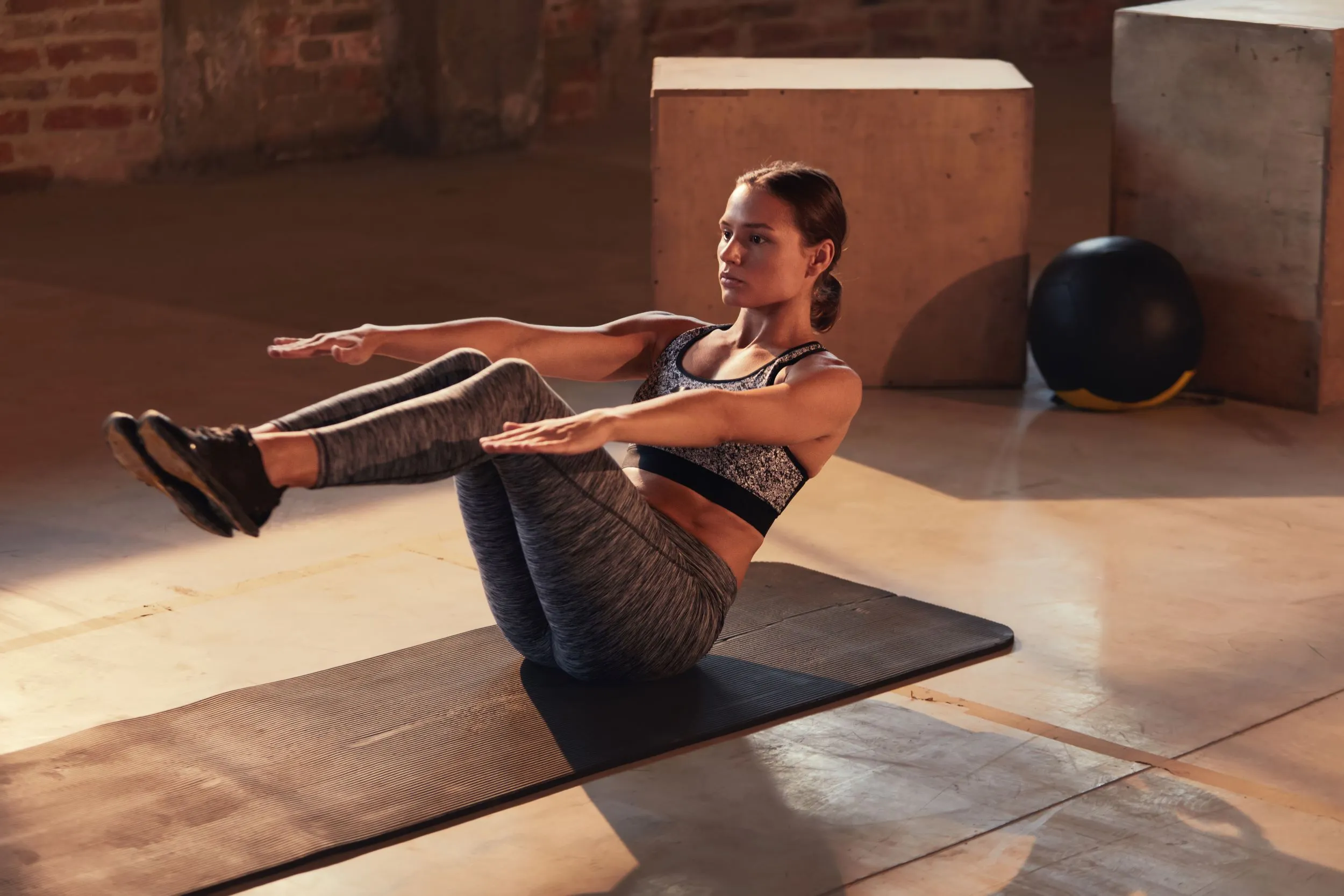
Static holds can be added to your routine in various ways. These techniques will help you reap the benefits of isometric exercises throughout your day.
As Part of Warm-Up
Start your workout with static holds to prepare your muscles. Hold a squat position for 30 seconds to activate your legs and core. Try a plank hold for 45 seconds to engage your entire body. This warms up your muscles and increases body awareness. Add wall sits to your warm-up routine. Begin with 15-second holds and gradually increase to 60 seconds as you strengthen.
During Strength Training Sessions
Mix static hold into your regular strength workouts to maximize their benefits. For example, hold the weight at the top position for 10-15 seconds after a set of bicep curls. On leg day, add pause squats by lowering into a squat and holding for 3-5 seconds before rising. This builds muscular endurance.
Also, try farmer’s walks with heavy dumbbells, walking 30 steps while maintaining a solid grip and upright posture. By incorporating these techniques, you can effectively add static holds into your daily routine and see noticeable improvements in your strength and endurance.
As Active Recovery
Use static holds on rest days to maintain muscle engagement without overexertion. Hold a lightweight object in front of you with straight arms for 30 seconds. Practice yoga poses like warrior III or tree pose. Hold each for 30-60 seconds to improve balance and core strength. Do a standing calf raise and hold the top position for 20 seconds. This keeps your legs active without intense exercise.
In Daily Activities
Add static holds to your everyday tasks. When brushing your teeth, do a one-legged stand to work on balance. While waiting in line, engage your core by pulling your navel towards your spine for 30 seconds. When watching TV, sit on the edge of your seat and lift your feet off the ground. Hold this position for 15-30 seconds to work your core.
Exercise Examples and Progressions
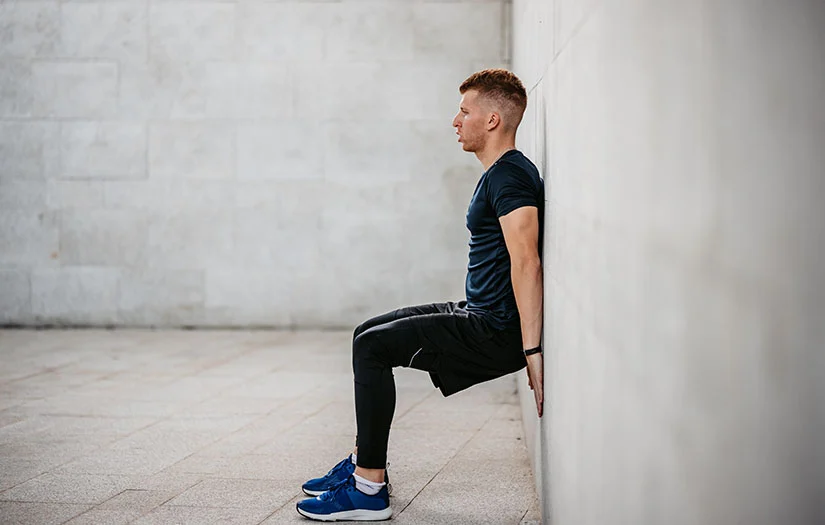
Static holds can target different muscle groups and improve strength and endurance. To truly benefit from these exercises, add static holds into your daily routine to add variety to your workouts and challenge your muscles in new ways.
Lower Body Static Holds
Wall sits are a great lower-body static hold. Stand with your back against a wall and slowly slide down until your thighs are parallel to the ground. Hold this position for 30-60 seconds. Single-leg holds can improve balance and leg strength.
Stand on one leg with your knee slightly bent. Hold for 30 seconds, then switch legs. For a more advanced option, try pistol squat holds. Lower yourself into a one-legged squat position and hold for 10-20 seconds.
Upper Body Static Holds
Push-up holds target your chest, shoulders, and triceps. Get into a high plank position and lower yourself halfway down. Hold this position for 20-30 seconds. Chin-up holds strengthen your back and biceps.
Jump up to grab a pull-up bar with your palms facing you. Hold yourself at the top position for as long as you can. Dumbbell holds can improve grip strength. Hold a heavy dumbbell in each hand by your sides for 30-60 seconds.
Core-Focused Static Holds
Planks are a classic core static hold. Start in a push-up position on your forearms. Keep your body in a straight line and hold for 30-60 seconds. Side planks target your obliques. Lie on your side and lift your body, supporting yourself on one forearm. Hold for 30 seconds on each side. Hollow holds engage your entire core. Lie on your back, lift your legs and shoulders off the ground, and hold for 20-30 seconds.
Progressing with Static Holds
Start with shorter hold times, like 10-15 seconds. Gradually increase the duration as you get stronger. Add small movements to increase difficulty. For example, lift one foot off the ground for a few seconds at a time during a wall sit. Use weights to make exercises harder. Hold dumbbells during lunges or wear a weighted vest for planks.
Try more challenging variations. Progress from a regular plank to a one-arm plank or from a wall sit to a single-leg wall sit. Combine static holds with dynamic exercises. For instance, do a set of push-ups followed by a push-up hold.
Programming Considerations
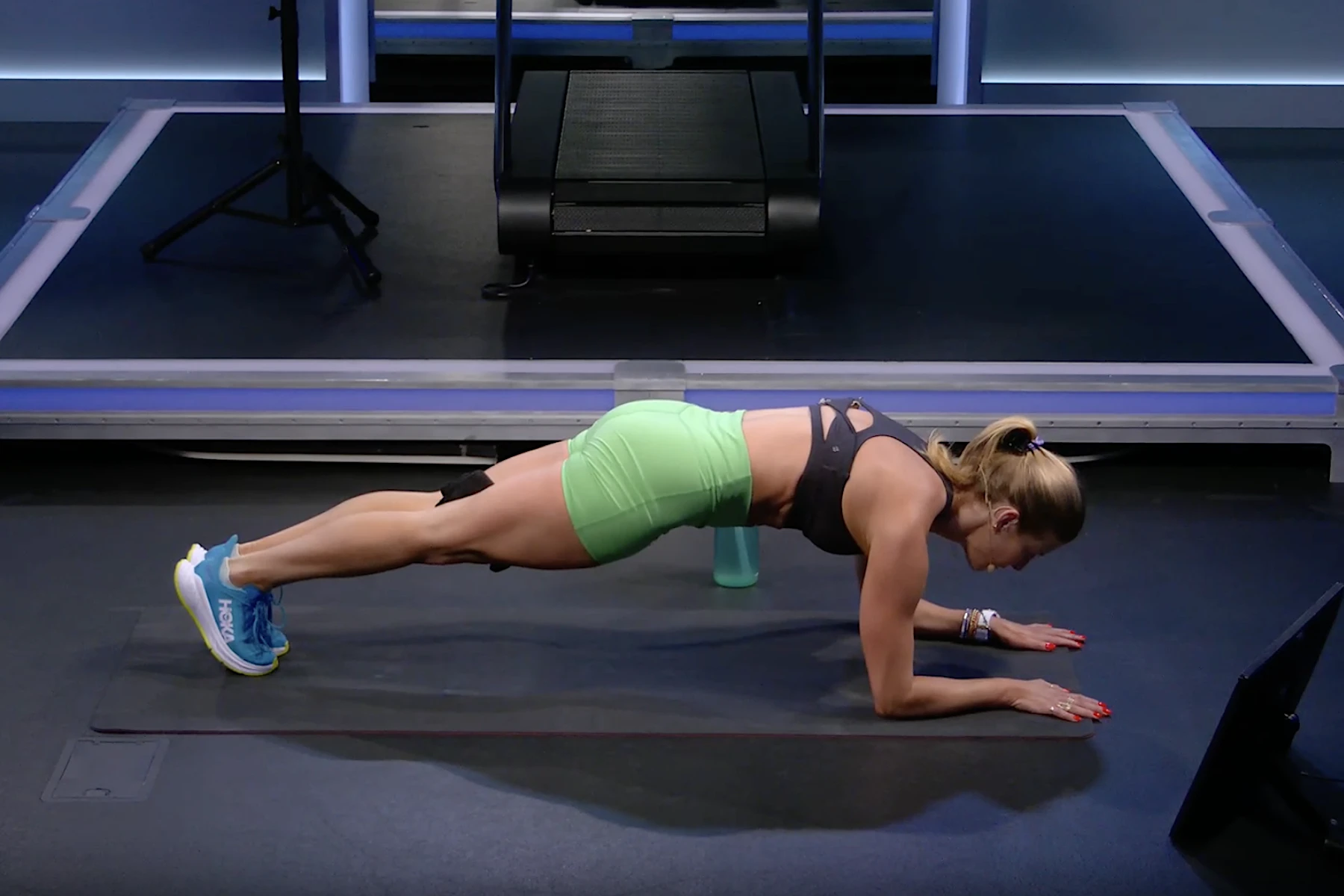
Static holds require careful planning to maximize benefits and prevent overtraining. Proper volume, duration, and recovery are key to successfully add static holds into your daily routine. With the right approach, these exercises can significantly enhance your strength and flexibility while ensuring you stay injury-free.
Volume and Frequency
Start by adding static holds 2-3 times per week. Pick 1-2 exercises per session to avoid overloading your muscles. Good choices include planks, wall sits, and overhead holds. These target major muscle groups effectively.
As you get stronger, slowly increase to 3-4 sessions weekly. Add variety by rotating between different static hold exercises each workout. Keep total volume moderate. Too many holds can lead to fatigue and slow progress. Listen to your body and adjust as needed.
Duration and Intensity
Begin with 15-30 second holds. This allows you to maintain proper form while building endurance. Gradually work up to 60-90 seconds per hold as your strength improves. Aim for five sets of each exercise.
Intensity matters, too. Choose a challenging position that you can maintain with good form. You should feel muscle tension but avoid shaking or losing position. Use a timer to track hold duration accurately. This helps you progress systematically over time.
Rest and Recovery
Allow 60-90 seconds of rest between sets. This gives your muscles time to recover before the next hold. Take at least one full day off between static hold workouts. This prevents muscle breakdown and promotes growth.
Pay attention to how you feel. If you’re constantly sore or tired, increase rest time or reduce workout frequency. Proper sleep and nutrition support recovery. Aim for nightly 7-9 hours of sleep and eat a balanced protein-rich diet.
Safety Precautions

Static holds can be effective, but it’s crucial to follow proper safety measures when you add static holds into your daily routine. Paying attention to form, knowing your limits, and taking steps to prevent injury will help you get the most out of these exercises safely.
Proper Form and Technique
Your form is key when doing static holds. Keep your body aligned and engage the right muscles. For a plank, your body should form a straight line from head to heels. Tighten your core and glutes. Don’t let your hips sag or your back arch.
For wall sits, keep your back flat against the wall. Your knees should be at a 90-degree angle. Avoid sliding down the wall or letting your knees extend past your toes. When doing a static hold with weights, grip the weight firmly. Keep your wrists straight and elbows slightly bent. Maintain good posture throughout the hold.
Understanding Limits
Know your fitness level, and push slowly. Start with shorter hold times, like 10-15 seconds. Slowly build up to longer holds as you get stronger. Listen to your body. If you feel pain, stop the exercise. Shaking or burning sensations are normal, but sharp pain is not.
Take breaks between holds. Rest for 30-60 seconds before your next hold. This gives your muscles time to recover. Don’t hold your breath during static exercises. Breathe steadily to keep oxygen flowing to your muscles.
Injury Prevention Measures
Warm up before doing static holds. A 5-10 minute light cardio session can prep your muscles. Follow this with some dynamic stretches. Use proper equipment. If doing holds with weights, choose a weight you can control safely. For floor exercises, use a yoga mat for comfort and grip.
Incorporate static holds gradually into your routine. Don’t do them every day at first. Give your body time to adjust. Stay hydrated before, during, and after your workout. This helps prevent muscle cramps and fatigue. If you have any health conditions or injuries, talk to your doctor before adding static holds to your routine.
Check out this extra video on static hold dumbbell workouts and planks.
By: Amy’s Beach Fitness
Transform Your Strength: How to Effectively Add Static Holds into Your Daily Routine
Incorporating static holds into your daily routine can be a game-changer for your strength and stability. These exercises might seem simple, but they offer profound benefits by challenging your muscles in unique ways. By maintaining a position for an extended period, static holds enhance muscular endurance, improve core stability, and increase flexibility. They are also incredibly adaptable, fitting easily into any routine, whether at home, at the gym, or even at work.
When you add static holds into your daily routine, starting with basic holds and gradually progressing to more advanced variations, it can help build strength and resilience efficiently. The key to success is to focus on proper form, listen to your body, and gradually increase the intensity. By integrating static holds into your daily routine, you can unlock new levels of physical strength and flexibility, transforming your fitness journey and achieving remarkable improvements in your overall fitness and daily activities.
Frequently Asked Questions
What Are the Best Static Hold Exercises to Include in a Daily Workout?
The best static hold exercises include planks, wall sits, and hollow holds. These target different muscle groups and can be done with minimal equipment. Chin-up holds and barbell holds are great for upper body strength. They challenge your grip and arm muscles effectively.
How Can Static Holds Enhance Muscle Growth?
Static holds keep muscles under tension for longer periods. This leads to muscle breakdown, which is key for building stronger and bigger muscles. The sustained tension also improves muscular endurance. This can help you perform better in other exercises and daily activities.
How Many Sets of Static Holds Are Recommended for an Effective Routine?
Start with 2-3 sets of static holds per exercise. Hold each position for 10-30 seconds, depending on your fitness level. As you get stronger, increase the hold time or add more sets. Remember to listen to your body and avoid overexertion.
Unlock Wellness and Thrive: Join the Fit After 55 Community!
Stay motivated to stay active with Fit After 55!
Visit our website at (https://www.vitalityseniorliving.com/resources_for_senior/staying-fit-at-55/) for expert advice, valuable insights, and reviews tailored for seniors. Connect with our encouraging community of health and fitness enthusiasts on our Facebook page at (https://www.facebook.com/fitafter50dotcom/).
Let’s start this fitness journey together and show that age is just a number!

